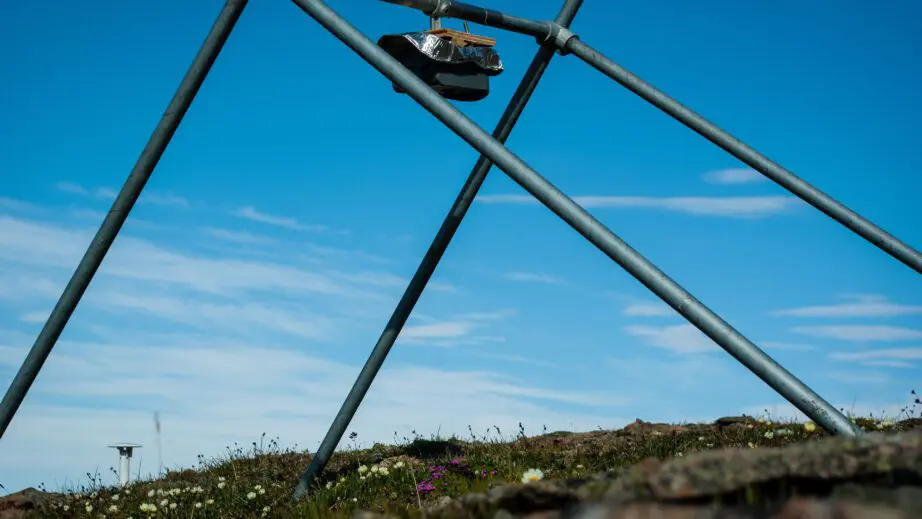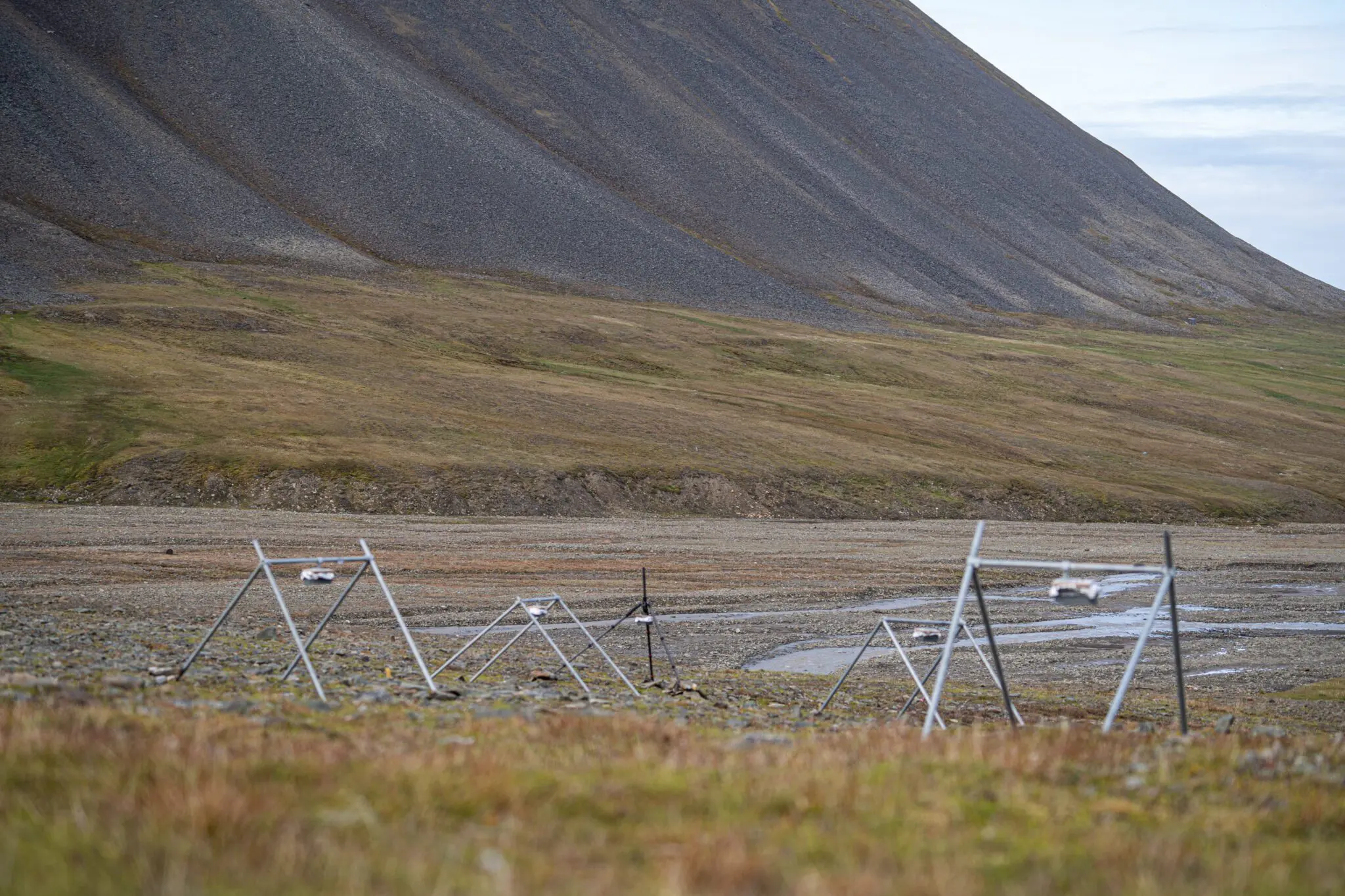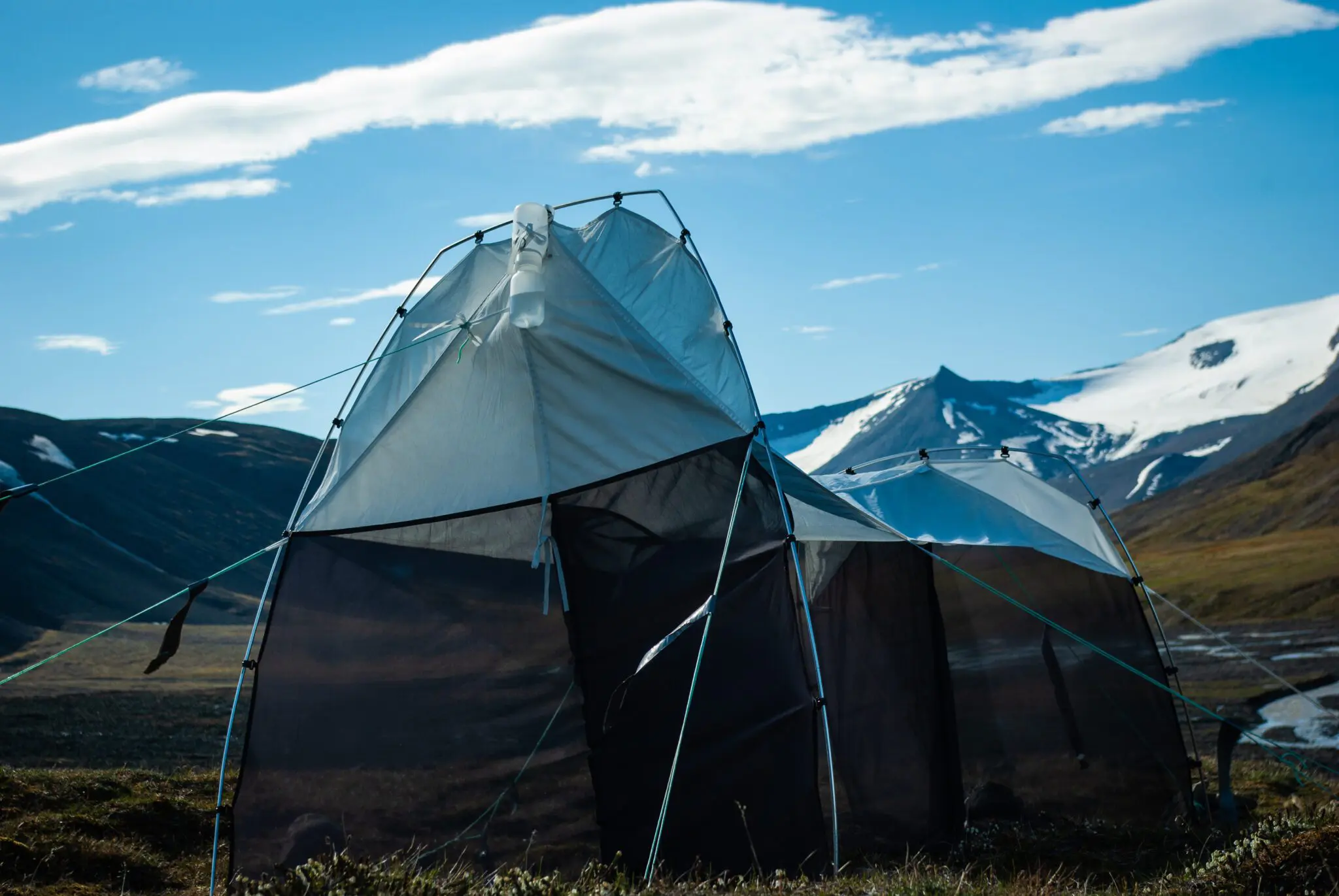BIG – Flower & invertebrate phenology time series
With the use of time-lapse cameras mounted above plants and invertebrate traps, we can study the phenology of flowers and invertebrates.
active

Time lapse camera pointing down at the purple cushion plant Silene acaulis
About the project
During the summers months (May/June – August/september), time lapse cameras has been mounted above Silene aculis and Dryas octopetala. As well as several traps to capture invertebrates at weekly intervals. The time lapse images will give data on the development of flowers over the season, the visitation of pollinators and ability to identify the pollinators taxa.
Time lapse images

The cameras are set to take one image per minute, this gives high resolution data, at a small ecological scale, over a long period of time. One can then go through the images manually and annotate down the information one is curious about, such as flower stage, what type of invertebrate is present, which flower it is visiting etc. There has also been advances in using machine learning (Project led by Toke T. Høye, Aarhus University) to generate the same data.
Capturing invertebrates
The captured invertebrates are from the same location as the cameras are placed. The method of capture varies.
One method is by fall traps. They are simple cups buried into the ground, allowing the invertebrates to simply fall into them. Another method are malaise traps. These are tents that redirect flying invertebrates into a sample bottle. A third method is to capture them actively using a sweep net. In all cases, the cup and sample bottle are filled with a solution that both kills and preserves the invertebrates.

The data from the invertebrates captured can be used to identify the species present in the area, and help with identifying the pollinators seen in the image time series.
Funding and connected projects
The project activities in Bjørndalen, Svalbard are a part of Bjørndalen Integrated Gradients (BIG).
The image time-lapse project of Silene acaulis was initiated and led by Pernille Bronken Eidesen , and funded by UNIS, Nansen foundation and Olav Thon foundation. The image time lapse sampling have been integrated as part of larger projects, with similar camera setup found on D. octopetala at a circumpolar scale (led by Toke T. Høye, Aarhus University), and for S. acaulis in Greenland (in cooperation with Toke T. Høye) and mainland Norway (in cooperation with Eike Müller, Randsfjordmuseet). The initial invertebrate sampling for the project was done in cooperation with Geir Søli, University of Oslo, but are currently led by Steve Coulson, UNIS.